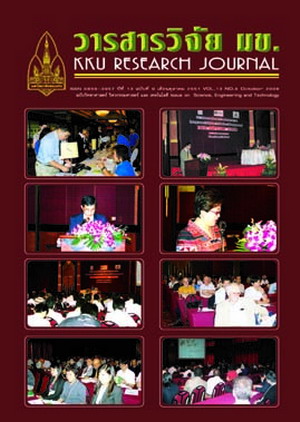Effect of arsenic (III) on the denitrification process
Main Article Content
Abstract
A sequencing batch reactor (SBR) was operated to develop denitrifying bacteria that had a mean specific denitrification rate of 0.11 g NO3 - -N/gVSS/day. Another system (an anaerobic digester) was operated to generate volatile fatty acids (VFAs) with the effluent concentration being measured to be 5655 876 mg/L as acetic acid. Using the denitrifying biomass developed in the SBR and VFAs generated in the digester as an external carbon source, a series of denitrification batch tests were conducted. The denitrification batch reactors were spiked with NO3 - -N (to get a C:N ratio of 3.0) and different arsenite concentrations to quantify the effect of arsenite on the denitrification rate. A steady deterioration in the ability of the biomass to denitrify under increasing arsenite concentrations was observed, with the mean specific denitrification rate dropping from 0.183 g NO3 - -N/gVSS/day at an arsenite concentration of 5 mg/L, to 0.047 g NO3 - -N/ gVSS/day at a concentration of 25 mg/L.
Article Details
How to Cite
Panthi, S. R., & Wareham, D. G. (2017). Effect of arsenic (III) on the denitrification process. Asia-Pacific Journal of Science and Technology, 13(9), 1001–1008. retrieved from https://so01.tci-thaijo.org/index.php/APST/article/view/83518
Section
Research Articles

